
Common Snake Species in Lexington
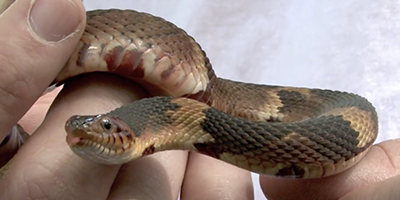 Broad-banded Water Snake:
Compared to other water snakes, the broad-banded water snake can be distinguished easily because of its broad dark bands.
They have an irregular pattern of wide black bands that fade to brown or shades of orange and yellow, which can be told apart from the usual pattern of crossbands on water snakes.
Being water snakes, they are naturally found in or close to different aquatic habitats including rivers, streams, lakes, and other similar places.
Broad-banded Water Snake:
Compared to other water snakes, the broad-banded water snake can be distinguished easily because of its broad dark bands.
They have an irregular pattern of wide black bands that fade to brown or shades of orange and yellow, which can be told apart from the usual pattern of crossbands on water snakes.
Being water snakes, they are naturally found in or close to different aquatic habitats including rivers, streams, lakes, and other similar places.
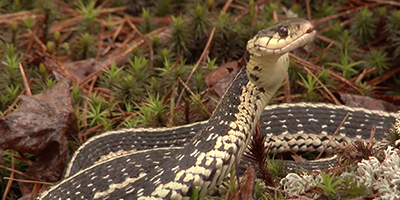 Eastern Garter Snake:
One of the most common snake species found in the area is the eastern garter snake. They are relatively small with three stripes that go down their back, usually in yellow but sometimes varying in color.
When the stripes are absent, they instead have dark spots occurring in rows down the back -which will sometimes give off the appearance of stripes.
This snake is common in the Kentucky area and is mostly found in urban parts of the state.
While they are harmless, they tend to get defensive when they feel they are in danger. They will either bite or release a smelly musk.
Eastern Garter Snake:
One of the most common snake species found in the area is the eastern garter snake. They are relatively small with three stripes that go down their back, usually in yellow but sometimes varying in color.
When the stripes are absent, they instead have dark spots occurring in rows down the back -which will sometimes give off the appearance of stripes.
This snake is common in the Kentucky area and is mostly found in urban parts of the state.
While they are harmless, they tend to get defensive when they feel they are in danger. They will either bite or release a smelly musk.
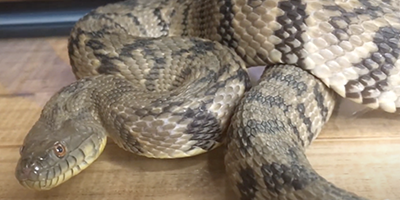 Diamond-backed Water Snake:
These snakes are non-venomous and are generally large in size. They are identified through the dark diamond-shaped blotches on their back and sides.
Their background color is often brown, but sometimes yellowish to greenish while their belly is a light yellow color with dark half-moon shaped spots spread throughout.
The diamond-backed water snake is usually found in aquatic habitats and normally isn’t the type of snake that would be aggressive around humans.
Diamond-backed Water Snake:
These snakes are non-venomous and are generally large in size. They are identified through the dark diamond-shaped blotches on their back and sides.
Their background color is often brown, but sometimes yellowish to greenish while their belly is a light yellow color with dark half-moon shaped spots spread throughout.
The diamond-backed water snake is usually found in aquatic habitats and normally isn’t the type of snake that would be aggressive around humans.
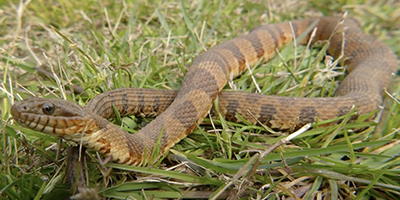 Northern Water Snake:
This snake is said to resemble the copperhead particularly because of their pattern and sometimes due to their colors.
They have dark crossbands that are presented nearly identical to that of the venomous copperhead. However, the northern water snake’s crossbands are wider on the back and narrower on the sides -which is opposite to that of the copperhead’s.
These non-venomous snakes tend to retreat to water when they are approached or threatened and can be found mostly nearby different bodies of water.
Northern Water Snake:
This snake is said to resemble the copperhead particularly because of their pattern and sometimes due to their colors.
They have dark crossbands that are presented nearly identical to that of the venomous copperhead. However, the northern water snake’s crossbands are wider on the back and narrower on the sides -which is opposite to that of the copperhead’s.
These non-venomous snakes tend to retreat to water when they are approached or threatened and can be found mostly nearby different bodies of water.
Venomous Snake Species in Lexington
 Copperhead:
Due to the pattern and color of the copperhead, they are often mistaken for other harmless snakes. In Kentucky, copperheads are commonly in the color reddish-brown to brown -which is the usual color for common non-venomous species.
However, the venomous snakes can be identified easier through their pattern. They have an hourglass crossband wherein the wider ends go at the sides while the narrower end is on their back.
There are instances where the bands appear broken, sometimes almost looking like blotches instead of actual crossbands.
Copperhead:
Due to the pattern and color of the copperhead, they are often mistaken for other harmless snakes. In Kentucky, copperheads are commonly in the color reddish-brown to brown -which is the usual color for common non-venomous species.
However, the venomous snakes can be identified easier through their pattern. They have an hourglass crossband wherein the wider ends go at the sides while the narrower end is on their back.
There are instances where the bands appear broken, sometimes almost looking like blotches instead of actual crossbands.
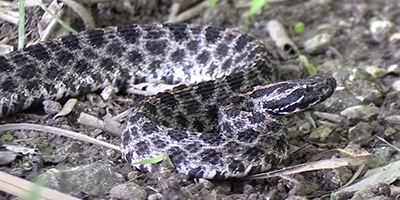 Pygmy Rattlesnake:
This venomous snake is commonly a light grayish brown with dark spots on its back, sometimes with a faint reddish-brown colored stripe. Their rattles are quite small which makes them harder to hear.
The pygmy rattlesnake usually stays near the water wherein they are able to feed on mice, lizards, frogs, and even smaller snakes.
They are also known to be the smallest member of the rattlesnake family, particularly in terms of overall size.
Pygmy Rattlesnake:
This venomous snake is commonly a light grayish brown with dark spots on its back, sometimes with a faint reddish-brown colored stripe. Their rattles are quite small which makes them harder to hear.
The pygmy rattlesnake usually stays near the water wherein they are able to feed on mice, lizards, frogs, and even smaller snakes.
They are also known to be the smallest member of the rattlesnake family, particularly in terms of overall size.
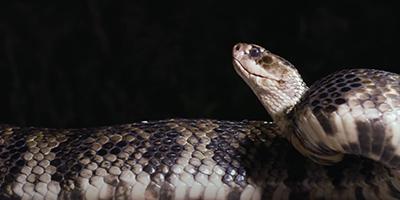 Western Cottonmouth:
These venomous snakes are usually dark and heavy-bodied. When they are younger, they are easily mistaken for a copperhead because of their dark crossbands and yellowish tail tips.
They don’t exactly have markings that can help in telling them apart from other snakes. However, they can be identified from their behavior.
Water snakes tend to jump into the water when they are threatened. Cottonmouths, on the other hand, open their mouths to display the whitish interior of their mouths.
Western Cottonmouth:
These venomous snakes are usually dark and heavy-bodied. When they are younger, they are easily mistaken for a copperhead because of their dark crossbands and yellowish tail tips.
They don’t exactly have markings that can help in telling them apart from other snakes. However, they can be identified from their behavior.
Water snakes tend to jump into the water when they are threatened. Cottonmouths, on the other hand, open their mouths to display the whitish interior of their mouths.